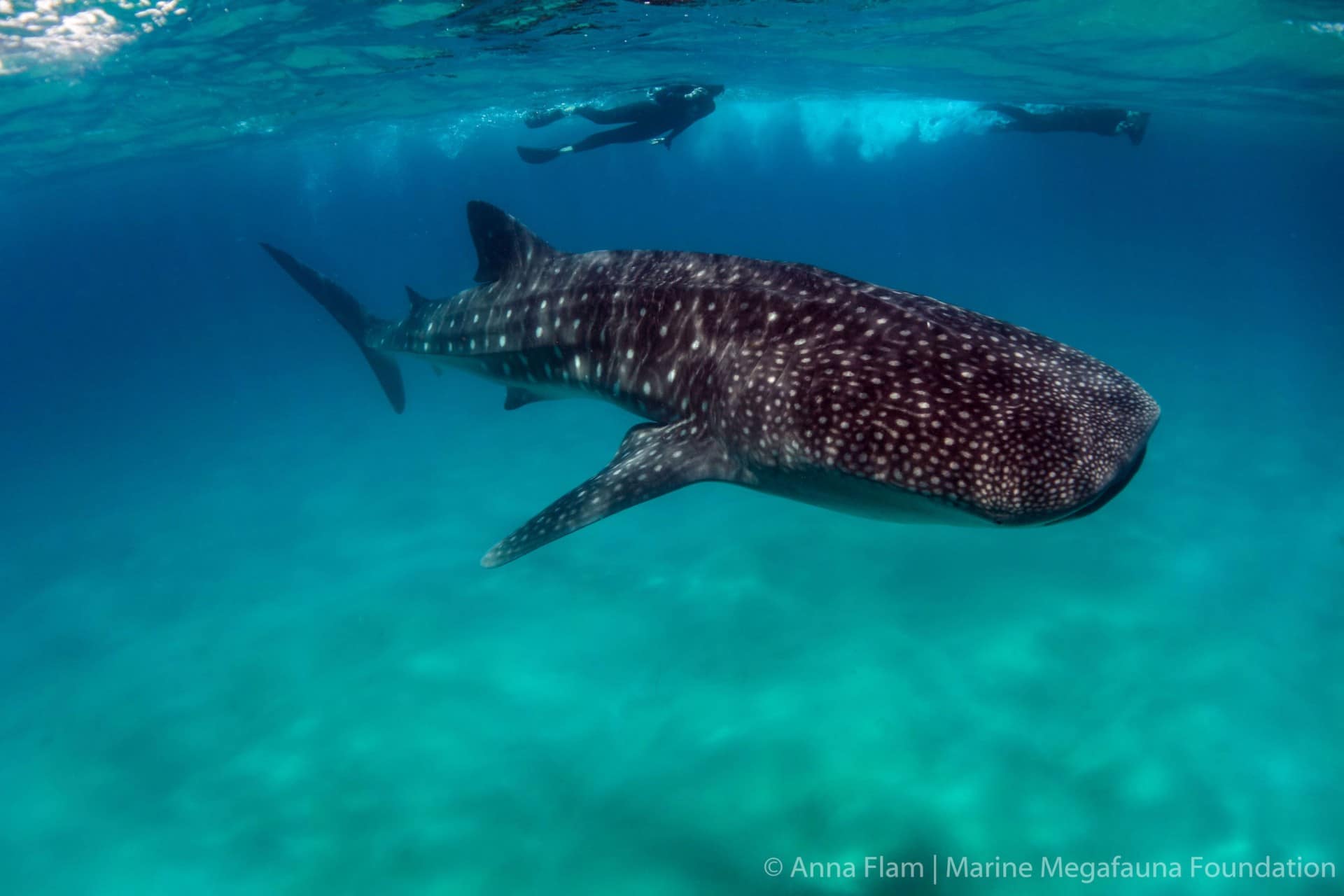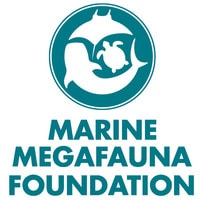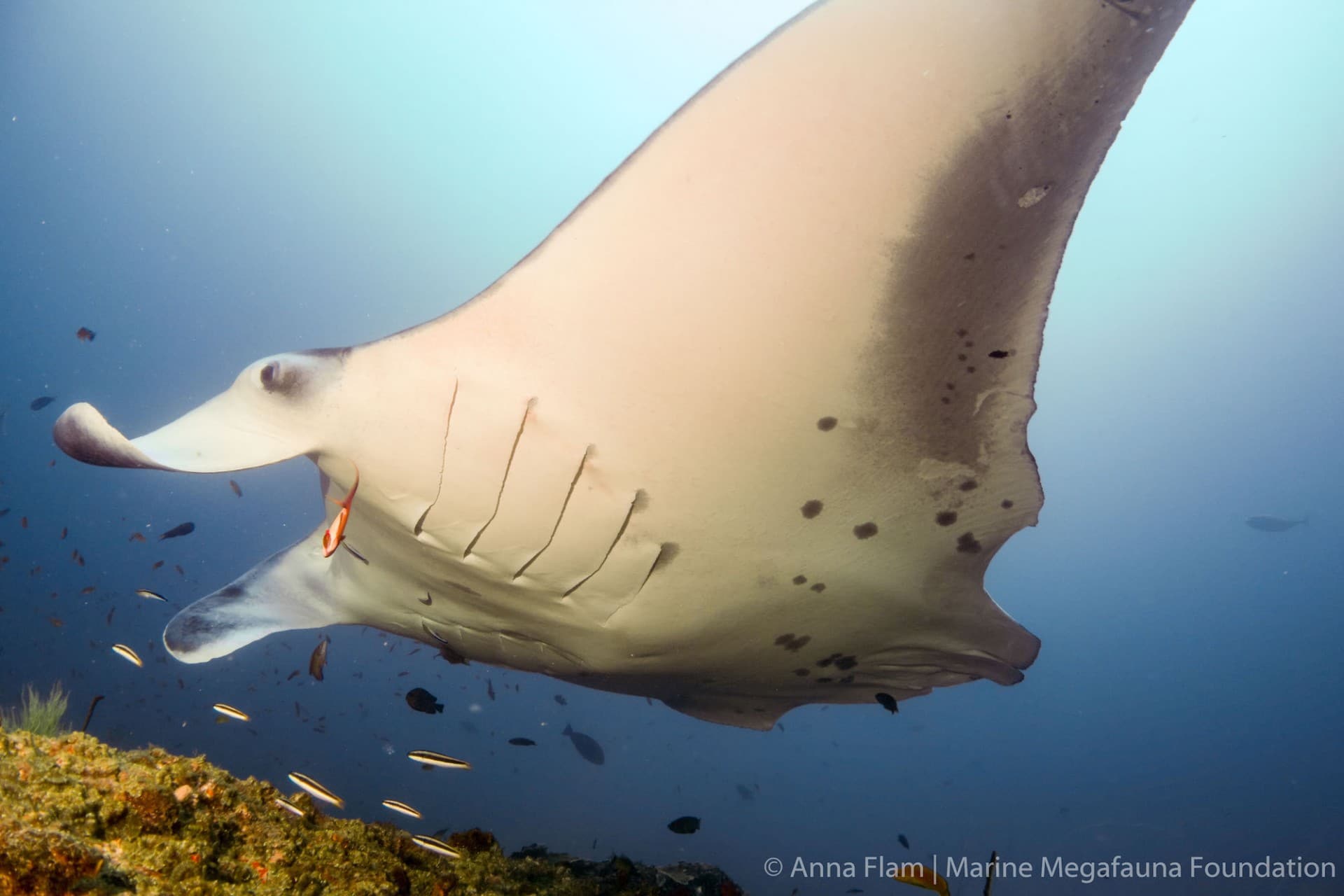News
Marine Megafauna Foundation launches diving expeditions

Join Andrea Marshall on MMF’s first dive expedition in Mozambique
The Marine Megafauna Foundation – a charity that aims to save threatened marine life – has unveiled new scuba diving expeditions to Mozambique where guests can join MMF’s co-founder Andrea Marshall and her team of scientists in their vital conservation research.
On this exciting expedition, divers will be able to explore the coast of Mozambique: one of the wildest and most breathtaking locations to encounter ocean giants like whale sharks, humpback whales and manta rays.
Not only will guests have the unique opportunity to dive and interact with these graceful and inquisitive creatures, they will also gain in depth knowledge about the species and contribute to research by helping to collect ID photos of the animals they encounter. For example each manta has a unique spot pattern on its underside that can be used to identify an individual, just like a fingerprint. By keeping photographic records of mantas, scientists can build a photographic catalogue of the population that can tell us about individuals and the population as a whole.
 During the expedition, guests will learn how to:
During the expedition, guests will learn how to:
-
Interact with whale sharks and manta rays without disrupting their natural behaviour
-
Identify the maturity of an individual animal and distinguish between males and females
-
Recognize different types of manta/shark/whale behavior
-
Take identification photos
-
Record environmental conditions
-
Process and organize ID photos
-
Identify different individuals using their unique spot patterns
Research presentations will give guests a greater insight into the biology, ecology and behavior of ocean giants such as Whale Sharks and Manta Rays, outline global threats to them and describe research and conservation efforts around the world.
The exclusive expedition, which runs from 23-31 August 2018 and is available from 3,280.00 USD per person not including flights, can accommodate five guests.
The itinerary includes:
-
23 August (Arrival Day): Guests arrive in the afternoon and prepare for an early start the next day. Optional group dinner to get to know the other expedition participants and your guide, Anna Flam
-
24-25 August – Bazaruto: Double tank dives on both days led by MMF’s co-founder Andrea Marshall. If conditions allow, one day will be spent diving at 2 mile and the other at San Sebastian (experienced divers only). Possible sightings include: Mobula Cleaning station (one of the two known ones worldwide), turtles, reef sharks. MMF Co-Founder will join the dives on these days and will also give an exclusive private talk on her world-class research program. Accommodation in Vilanculos
-
26 August – Vilanculos to Tofo: Departing Vilanculos in the morning to drive to Tofo Beach with a dive in the afternoon
-
27, 28 & 29 August – Tofo: Diving the sites where MMF’s founder Andrea Marshall started her research on manta rays. Double dives will be scheduled but guests have the option of substituting one for land work with MMF’s marine research team if they are interested. Tofo and the surrounding areas offer lots of deep dive site, which makes for a great opportunity to see “big stuff” such as: whale sharks, manta rays, dolphins, turtles and more…
-
30 August – non-diving day in Tofo: On the day before departure, guests will enjoy an Ocean Safari which is the perfect opportunity to see the breaching humpback whales which come to Tofo during this time of year
-
31 August – Departure to Vilanculos.

Photo: Anna Flam, Marine Megafauna Foundation
In Bazaruto, guests will have the exclusive opportunity to dive with MMF’s Co-Founder Andrea Marshall – aka “Queen of Mantas.” Andrea was the first person in the world to complete a PhD on manta rays and has dedicated her life to the preservation and management of the manta ray population in Mozambique. Now a global ambassador for manta rays, Andrea continues to pursue international conservation initiatives for manta rays and fight for their protection worldwide.
In Tofo, the trip will be led by MMF’s Manta Researcher Anna Flam who, over the past four years with MMF, has been collecting vital information on manta ray population size, structure and connectivity. Her data can be used to further understand populations and guide the development of management and conservation strategies. Anna is also the global coordinator for MantaMatcher.org.
Anna Flam, MMF’s Manta Researcher, said: “Our new dive expeditions offer the unique opportunity of interacting with Mozambique’s stunning ocean giants while assisting MMF’s researchers in their vital conservation work. This is a truly once-in-a-lifetime trip, not only for the world-class diving but also for the exclusive access you’ll have to our scientists. We’re looking forward to welcoming our first group of divers to our beautiful home here in Mozambique!”
For more information or to book your place on this trip of a lifetime, please visit: https://marinemegafaunafoundation.org/dive-moz/.
News
Book Review: Fire on Monroe Bravo by Fred Lockwood

Fire on Monroe Bravo is the latest book in the Jack Collier series by Fred Lockwood. Our story begins with our lead characters, Jack and Sandro, owners of Marine Salvage & Investigation Company, arriving on the Monroe Bravo Oil & Gas Platform in the North Sea. Having secured a contract for their vessel the MV Stavanger to act as support ship to the platform for TransGlobal Oil, our protagonists are on a celebratory visit.
However almost as soon as they arrive a series of explosions rock the platform, causing huge damage, loss of life and the very real danger of a massive human, ecological and financial disaster.

As the danger mounts for both our heroes and the surviving workers, Jack and Sandro will have to escape the inferno, all while trying to save the platform and the men still trapped unable to help themselves.
The disaster sets the scene for the unfolding story lines following the fate of the platform and our main characters, the police investigation into a suspected terrorist act and the actions of TransGlobal Oil as they attempt to navigate the pubic outcry and financial repercussions.
In his eighth book, Fire on Monroe Bravo, Fred Lockwood delivers an explosive thriller, with plenty of above and in-water drama, and our heroes fighting for survival, what more can you ask for?
We thoroughly recommend this read and look forward to the next in the series. For more information about his book series, you can check out the reviews of his previous books here on Scubaverse.
- Title: Fire On Monroe Bravo
- Author: Fred Lockwood
- ISBN: 979-8325324536
Available in a paperback version and for Kindle from Amazon and book stores.
Blogs
Alonissos: The complete diving destination (Part 1)

In June we were incredibly fortunate to be invited to dive in Alonissos, a small Greek Island in the Sporades island chain located in the North Aegean Sea. While I have long been a big fan of the Greek Islands as a great holiday destination, I had not had the opportunity to do any diving on previous visits and Mike and I were extremely excited to see what Alonissos had to offer both above and below the surface!

The Sporades are easily accessible via the airport in Skiathos (the first island in the chain), which is served by Jet2 flights from all major UK airports from May through October. Numerous ferries and charter boats make island hopping from Skiathos Town a breeze. After an hour boat ride, the picturesque port of Patitiri was a wonderful introduction to Alonissos, where we were met by our gracious hosts Kostas of Albedo Travel and Dias of Alonissos Triton Dive Center. Mike and I were delighted to be staying at the Paradise Hotel, aptly named for its stunning views over the sea and great location for walking to the waterfront.

Alonissos is beautifully situated in the National Marine Park of Alonissos and the Northern Sporades, the largest marine protected area in Europe. The surrounding seas offer fabulous marine life, including incredibly rare species such as the Mediterranean monk seal. They boast deep walls covered in gorgonians and sponges, stunning topography with caverns, swimthroughs and pinnacles, and the first accessible ancient shipwreck from 500BC!

In locations where historical sites have been reported, the waters are largely restricted, but with collaboration between government, underwater archeologists and dive centres, incredible underwater museums are being created for a truly unique diving experience. Alonissos is home to the first of these, the Ancient Shipwreck of Peristera Accessible Underwater Archeological Site. The chance to dive into history (along with reports of healthy reef life and amazing underwater topography) meant Mike and I were keen to get in the water.

Our introduction to the diving around Alonissos was at the Agios Georgios Pinnacles, in the channel between Alonissos and Skopelos. This fantastic site was named “The Chimney,’ and proved to have a huge amount to see. We got to a decent depth here (over 25m), and marvelled at a colourful reef wall with a wonderful swim through whose rocky walls were absolutely covered with life. As well as brilliant topography there was no shortage of macro life here. We saw numerous nudibranchs, five different species in total. The second dive at Mourtias reef nearby was a shallower dive along a nice wall with lots of crevices. Several moray eels and grouper called this site home. We enjoyed looking in the crevices for lobster and smaller benthic life, such as cup corals and tunicates.

Our itinerary allowed us two dives a day with afternoons left to explore the island with our hire car and evenings to enjoy the famous Greek hospitality. This proved to be a lovely mix of in-water and land based diversions.

The next days diving to the Gorgonian Gardens and Triton’s Cave was to be even better! These two stunning sites are nothing short of fabulous. The Gorgonian Gardens was a deep wall near to the Agios Georgios islands. The ever-present currents in this deep channel meant that the sea life was amazing … the namesake Gorgonian sea fans dotted the wall at a depth of 30 to 50 meters, getting ever larger the deeper we went. Above 30m was by no means less beautiful, with sponges, corals, scorpionfish, moray eels and some rare and colourful nudibranchs.

The second shallower dive of the day was to Triton’s Cave or the Cavern of Skopelos, on the east side of that island. The spectacular rock formations had wild striations both above and below the water making a truly epic topography. The cavern entrance was at 14m, and big enough for a buddy pair, winding up to 6m and passing two beautiful windows out into the blue. Emerging from the cavern, the light at the shallower depths and the incredible rock formations made for a fantastic gentle swimming safety stop and we all surfaced by the boat with massive grins.

Check out our next blog :Alonissos: The complete diving destination (Part 2)” to hear about our amazing dive on the 2500 year old Peristera Wreck!
Thanks to:
Alonissos Triton Dive Center https://bestdivingingreece.com/
Albedo Travel https://alonissosholidays.com/activities/
Paradise Hotel https://paradise-hotel.gr/
Alonissos Municipality https://alonissos.gr/en/
-

 Blogs2 months ago
Blogs2 months agoDiving With… Nico, Ocean Earth Travels, Indonesia
-

 News1 month ago
News1 month agoMurex Bangka Announce New Oceanfront Cottages & Beachfront Dining
-

 Blogs2 months ago
Blogs2 months agoA new idea in freediving from RAID
-

 Marine Life & Conservation1 month ago
Marine Life & Conservation1 month agoIceland issue millionaire whale hunter a licence to murder 128 vulnerable fin whales
-

 Marine Life & Conservation2 months ago
Marine Life & Conservation2 months agoThe Shark Trust Great Shark Snapshot is back
-

 News3 months ago
News3 months agoCharting New Waters; NovoScuba Goes Global with the Launch of their Revolutionary Dive Training Agency!
-

 Gear News1 month ago
Gear News1 month agoNew Suunto Ocean – a dive computer and GPS sports watch in one for adventures below and above the surface
-

 Marine Life & Conservation Blogs2 months ago
Marine Life & Conservation Blogs2 months agoBook Review: Plankton















